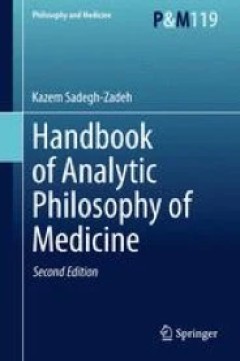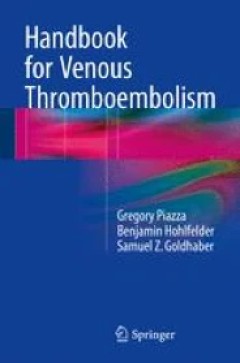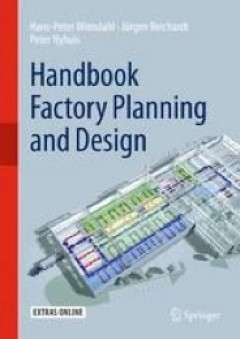Filter by

Art Wealth Management: Managing Private Art Collections
This book offers an overview of how to manage private art collections, providing essential insights on art wealth management, art investment, art governance, and succession planning for art assets. It offers practical recommendations on sound art collection governance, but also examines the background of art markets and price building, including the influence of fashion and trends. Throughout h…
- Edition
- Ed. 1
- ISBN/ISSN
- 978-3-319-24241-5
- Collation
- XIII, 162
- Series Title
- Management for Professionals
- Call Number
- 658.15 ART a

Handbook of Purified Gases
Technical gases are used in almost every field of industry, science and medicine and also as a means of control by government authorities and institutions and are regarded as indispensable means of assistance. In this complete handbook of purified gases the physical foundations of purified gases and mixtures as well as their manufacturing, purification, analysis, storage, handling and transp…
- Edition
- -
- ISBN/ISSN
- 978-3-540-32598-7
- Collation
- X, 521
- Series Title
- -
- Call Number
- 621 SCH h

Handbook of Integrative Dermatology An Evidence-Based Approach
This user-friendly reference tool presents clinical scenarios and discusses some practical complementary and alternative therapies available in dermatology. It focuses on peer-reviewed data that are suitable for use in a conventional dermatology practice and helps dermatologists guide their patients when faced with questions regarding integrative dermatology using an evidence-based, reader-frie…
- Edition
- -
- ISBN/ISSN
- 978-3-319-17815-8
- Collation
- XVIII, 226
- Series Title
- -
- Call Number
- 616.9

Handbook of Modern Sensors Physics, Designs, and Applications
This book presents a comprehensive and up-to-date account of the theory (physical principles), design, and practical implementations of various sensors for scientific, industrial, and consumer applications. This latest edition focuses on the sensing technologies driven by the expanding use of sensors in mobile devices. These new miniature sensors will be described, with an emphasis on smart sen…
- Edition
- -
- ISBN/ISSN
- 978-3-319-19302-1
- Collation
- XIX, 758
- Series Title
- -
- Call Number
- 621 FRA h

Handbook of Mathematics
This guide book to mathematics contains in handbook form the fundamental working knowledge of mathematics which is needed as an everyday guide for working scientists and engineers, as well as for students. Easy to understand, and convenient to use, this guide book gives concisely the information necessary to evaluate most problems which occur in concrete applications. In the newer editions emph…
- Edition
- -
- ISBN/ISSN
- 978-3-662-46220-1
- Collation
- XLIV, 1207
- Series Title
- -
- Call Number
- 621 BRO h

Change Management in TVET Colleges Lessons Learnt from the Field of Practice
The Technical and Vocational Education and Training (TVET) college environment is marked by increasingly stark juxtapositions between what needs to be achieved in the post-school education sector and the increasing difficulty of current conditions. The ‘triple challenge’ of poverty, inequality and unemployment weighs heavily on the social, political and economic fabric of the country and ex…
- Edition
- -
- ISBN/ISSN
- 9781928331339
- Collation
- -
- Series Title
- -
- Call Number
- 658

Building on experience Learning from the past to plan for the future
The LIBER Architecture Group reflects on experience of European library building projects from the past twenty years in order to plan the next generation of library buildings. This documentation of recent library building projects accompanies the 14th Seminar of the LIBER Architecture Group, taking place in Budapest and Debrecen (Hungary) 8–12 of April 2008. Most described projects refer to s…
- Edition
- -
- ISBN/ISSN
- 9783940344267
- Collation
- -
- Series Title
- -
- Call Number
- 690

Handbook of Analytic Philosophy of Medicine
Kazem Sadegh-Zadeh (born 23 April 1942) is an analytic philosopher of medicine. He studied medicine and philosophy at the German universities of Münster, Berlin, and Göttingen with Internship and residency 1967-1971, assistant professor 1972-1982, full professor of philosophy of medicine at the University of Münster 1982-2004. Sadegh-Zadeh was born in Tabriz, Iran. He has made significant co…
- Edition
- -
- ISBN/ISSN
- 978-94-017-9578-4
- Collation
- XXXVIII, 1224
- Series Title
- -
- Call Number
- 610 SAD h

Handbook for Venous Thromboembolism
This book has been developed over numerous iterations within the Brigham and Women’s Hospital to provide the most critical information for trainees and physicians, and thus it represents a truly practical guidebook for anyone who needs the key information on the diagnosis, management and prevention of venous thromboembolism. Specific areas of focus include understanding the risk factors for V…
- Edition
- -
- ISBN/ISSN
- 978-3-319-20842-8
- Collation
- XIII, 144
- Series Title
- -
- Call Number
- 616.9

Handbook Factory Planning and Design
This handbook introduces a methodical approach and pragmatic concept for the planning and design of changeable factories that act in strategic alliances to supply the ever-changing needs of the global market. In the first part, the change drivers of manufacturing enterprises and the resulting new challenges are considered in detail with focus on an appropriate change potential. The second par…
- Edition
- -
- ISBN/ISSN
- 978-3-662-46390-1
- Collation
- XVIII, 501
- Series Title
- -
- Call Number
- 621 HAN h
 Computer Science, Information & General Works
Computer Science, Information & General Works  Philosophy & Psychology
Philosophy & Psychology  Religion
Religion  Social Sciences
Social Sciences  Language
Language  Pure Science
Pure Science  Applied Sciences
Applied Sciences  Art & Recreation
Art & Recreation  Literature
Literature  History & Geography
History & Geography